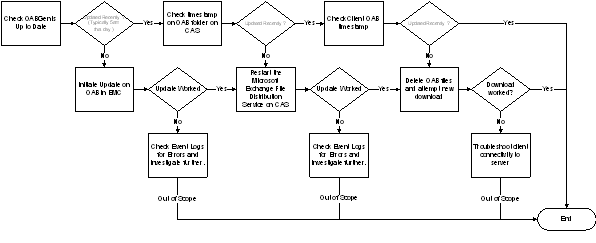The Exchange 2007/2010 Offline Address Book Generation Process
The Exchange 2007/2010 Offline Address Book (OAB) can be a pain to manage in environments where users expect instant access to updates to the Global...
The Exchange 2007/2010 Offline Address Book (OAB) can be a pain to manage in environments where users expect instant access to updates to the Global Address List. Outlook 2007/2010 clients running in Cached Mode use the Offline Address Book by default for all address lookups. This means when a new user is added to your domain and mailbox enabled they will not appear in the “GAL” for Outlook clients until the OAB generation and distribution process has run it’s course. The following article explains how the OABGen and Web-Distribution process works in Exchange 2007 and 2010.
Process for OAB Generation and Web-Based Distribution:
Troubleshooting your OAB issues:
Based on the process above there are a number of locations where the web-distribution of the OAB can break. In attempting to think this process through I created a process map. This map covers the basics of the troubleshooting, but at the second level I don’t go further because there could be any number of reasons for those services to break.

References:
http://msexchangeteam.com/archive/2006/11/15/431502.aspx
http://www.eggheadcafe.com/conversation.aspx?messageid=34825591&threadid=34821136
The Exchange 2007/2010 Offline Address Book (OAB) can be a pain to manage in environments where users expect instant access to updates to the Global...
In Exchange 2010, the Client Access Servers now handle all client traffic now (MAPI, Outlook Anywhere, IMAP, POP, OWA, etc.). In Exchange 2007, you...
One of my goals with any solution is “simplicity”. Make it easier for users to access the resources they need in a safe and secure manner....